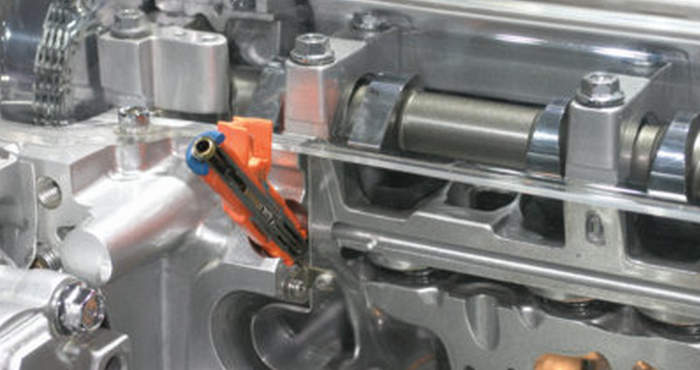
Fuel injectors play a big role in today’s vehicles, which emphasize precision and timing in order to improve fuel economy and reduce emissions. If those fuel injectors are clogged or out of whack, then all of that precision goes out the window.
If you missed it, be sure to check out our 10 Signs a Fuel Injector Needs To Be Replaced for some of the biggest fuel injector maintenance tips. Like No. 3, Heat Soak:
When the engine is shut off, the injectors undergo heat soak. Fuel residue evaporates in the injector nozzles, leaving the waxy olefins behind. Because the engine is off, there is no cooling airflow moving through the ports and no fuel flowing through the injectors to wash it away, so heat bakes the olefins into hard varnish deposits. Over time, these deposits can build up and clog the injectors. A vehicle may have low mileage, but short drive cycles and increased heat soaks can clog the injector.
Since the formation of these deposits is a normal consequence of engine operation, detergents are added to gasoline to help keep the injectors clean. But if a vehicle is used primarily for short-trip driving, the deposits may build up faster than the detergents can wash them away. On four-cylinder engines, the No. 2 and No. 3 injectors are in the hottest location and tend to clog up faster than the end injectors on cylinders No. 1 and No. 4. The same applies to the injectors in the middle cylinders in six- and eight-cylinder engines. The hotter the location, the more vulnerable the injector is to clogging from heat soak. Throttle body injectors are less vulnerable to heat soak because of their location high above the intake manifold plenum.
Heat soak can affect direct-injection injectors due to their placement in the head. Even with the higher pressures, the orifices can become clogged over time.
If you suspect a bad injector, it is time for a balance test. What’s a balance test? Be sure to head over to 10 Signs a Fuel Injector Needs To Be Replaced for more information.













